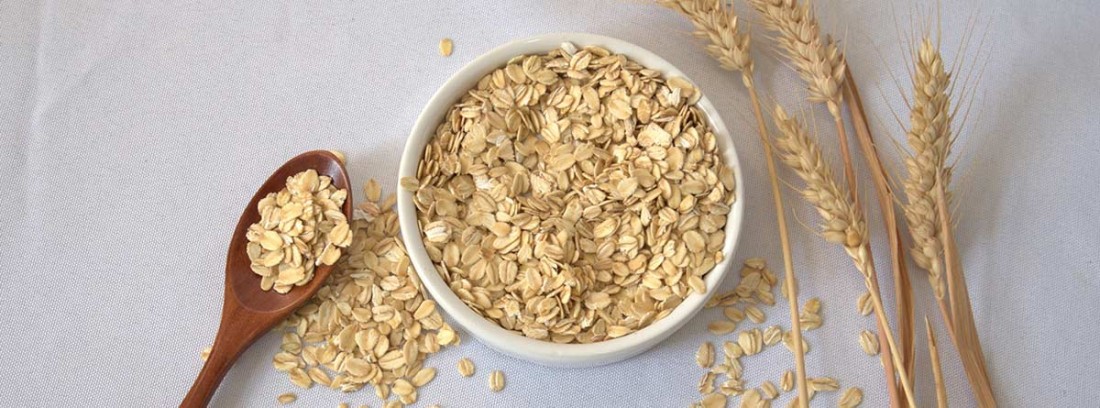What is wheat germ and what benefits does it have?

What is wheat germ?
Just as its name suggests, wheat germ is a part of the wheat grain. The whole grain is the fruit or seed of the plant, and is divided into three parts:
- Saved
- Endosperm
- Germ.
Wheat germ is the smallest component, accounting for only 2-3% of its size. Is the part of the seed that will germinate and from which a new plant will be born. It is not present in most products derived from wheat, such as flours, since in the refining process it is eliminated in order to avoid rancidity of the cereal.
Nutritional composition
Wheat germ stands out for its content of vitamin E, essential fatty acids, proteins and carbohydrates, B vitamins and minerals such as potassium, phosphorus and magnesium.
Featured Nutrients
Vitamin E
This vitamin is a powerful antioxidant, which is responsible for protecting the body from known substances that can damage cells, organs and tissues. In addition, participate in the immune system against the attack of viruses and bacteria, participate in the formation of red blood cells, in cellular processes and in formation of vitamin K among many other functions.
Group B vitamins
Wheat germ contains significant amounts of it, such as B1, B2 and B6, which benefit the nervous and immune systems.
Essential fatty acids
Essential fatty acids (EFAs) are vital nutritional components as they are necessary to carry out countless functions, such as reducing the accumulation of lipids in the arteries (lowering LDL cholesterol and increasing HDL), or promoting the synthesis of hemoglobin. They are components of cell membranes and have a vasodilator action and, therefore, help reduce blood pressure.
It also has a anti-inflammatory and protective action about different types of cancer, especially breast cancer. As their name suggests, they are essential nutrients because our body cannot synthesize them. For this reason, it is advisable to eat them with your diet.
Potassium
This mineral is typical of plants, essential for the transmission and generation of the nerve impulse, it participates in muscle contraction, as well as in the water balance both inside and outside the cell. One of the consequences of electrolyte loss due to dehydration can be cramps.
Match
The main function of phosphorus is to form part of the bones and teeth. It participates in the metabolism of lipids and carbohydrates and helps in the formation, conservation and protein repair of tissues and cells. Participates in the production of ATP (a molecule that helps to store energy), in kidney function, muscle contraction, nerve impulse ...
Magnesium
It is responsible, among other functions, for maintaining proper functioning of the intestines, muscles and nerves, it also participates in the regulation of cardiac contraction, improves the immune system, and is also part of bones and teeth.
Health benefits
- Disease prevention. Being an important source of antioxidants, thanks to its vitamin E content, it helps fight free radicals that are produced in the body, harmful to the body as they alter the DNA of genes, proteins and fats. Low levels of antioxidants are precursors of some diseases such as cancer or cardiovascular diseases. In addition, they play an important role in the aging processes.
- Cardioprotective action: thanks to its fiber and essential fatty acid content, it helps to improve the lipid profile, blood pressure and, in general, to prevent cardiovascular diseases.
- Improves the immune system
Group B vitamins participate in the proper functioning of the immune system, increasing the body's defenses.
How to consume it
Wheat germ can be consumed in flakes or powder. It is a good option to mix it with juice, milk or soup, added to yogurt or sprinkled on salads. It can also be added as an ingredient in fillings, hamburgers, meatballs or tortillas.
How much to take?
Wheat germ can be eaten at any age. In adults it is advisable to take between one and three tablespoons, and in children between one and three tablespoons for dessert.
It is important to remember that food supplements should complement a healthy diet, not replace it.
Before taking any supplement you should always consult with your doctor. They have a 24-hour Medical Guidance service where a nutritionist can clarify all your doubts.
CALCULATE YOUR PRICE
-
- The whole grain is the fruit or seed of the plant, and it is divided into three parts: bran, endosperm and germ. The wheat germ is the part of the seed that will germinate and from which a new plant will be born.
- Wheat germ stands out for its content of vitamin E and essential fatty acids, which give it antioxidant and cardioprotective properties.
- The supplements are presented in the form of flakes or powder, and can be added to soups, milk, yogurt ... or as an ingredient in vegetable burgers or salads.
Diploma in Human Nutrition and Dietetics
Master in Pediatric Nutrition and Sports Nutrition
(Updated at Apr 13 / 2024)